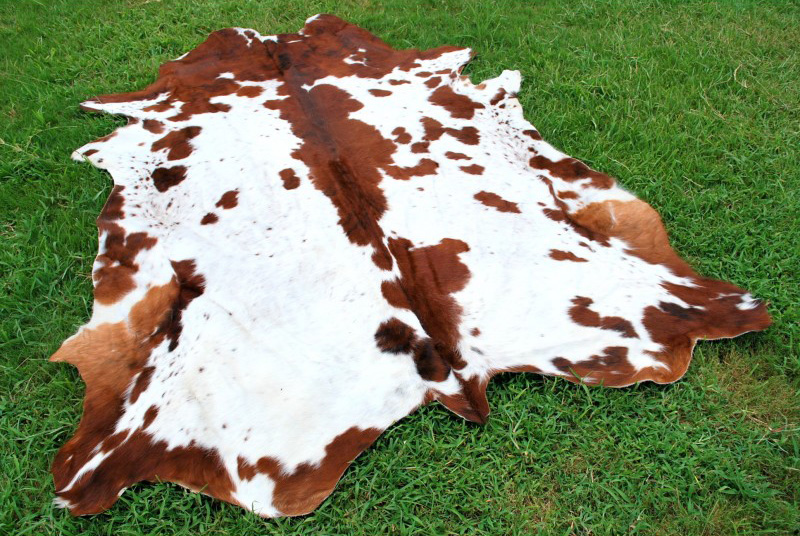Where Do Brazilian Cowhides Come From?
- By Ignacio Toro
- Sep 7, 2018

The most obvious answer is, of course, that they come from Brazil and that they come from cows who are raised in Brazil. This is not, however, the full story. In fact, there are many steps in between the animal and actually getting a beautiful cowhide rug, pillow, or piece of furniture that you can use in your home. If you’ve wanted to learn more about how the highest quality Brazilian cowhides are made, you have come to the right place. Brazilian cowhides are widely considered to be the best cowhides in the world, with Argentine cowhides being a close second. Here’s how they are made:
1. Pretanning
The first step in the process is called pretanning and it comes, logically, before tanning. The fresh hide is placed in water, which helps it to hold on to his moisture and will make it softer, so it is easier to work with and more supple to the touch when they hide is completely finished. Our manufacturers use only the very best skins that they can find, which ensures a much better product at the end of this process. The quality of the hide when it starts the production process is as important as the production process itself. This is why cowhides that you find made in other countries or from lower-quality animals will be neither as soft nor as durable as the ones you can find here in our store. After the cowhide has been soaked in water, it is then moved to a brine, which essentially pickles the hide. This is the only way to prevent the hide from rotting and kills any bacteria that might be living on the hide. This is the second and final step in the pretanning process and is essential to creating a cowhide that you are able to use in your home.
2. Tanning
After pretanning, the hide is then moved into the tanning stage of this process. Most manufacturers use a mixture of chromium salts in order to treat the hide. It affects the collagen in the hide, making it softer and even helping to preserve the hide in general, so that it is softer to the touch and is much more durable. This is an essential step for preserving the hide and for giving it the feel that most people are accustomed with when they touch a cowhide.
3. Finishing
The tanning step of the process might create a bluish hue on the cowhide, which is not something that most people want in their cowhides. Though the treatment with chromium salts is necessary to make the hide, if the hide is not finished, it will have the unfamiliar blue color. The hide is removed from the tanning process and is treated, usually with a combination of fats and died, so that it looks like the leather that we are all more familiar with. This is an essentially step if you want cowhide that actually looks like cowhide. The very best hides are those that generally present their natural colors, as per the breed the hide was taken from.
4. Dyeing
In some instances, the hide might then be further died or treated, to make it look like another animal or to give it an entirely different style or appearance. One of the most common treatments is to dye a hide so that it looks like a zebra. Only the highest quality hides can be sued for this process, as it might be too damaging to produce a good result when the hide is not quality. Are all of these steps really necessary in order to get a high quality Brazilian cowhide? The truth is that every single step of this process is important to create a cowhide that is durable and that also looks great. The tanning process, especially, is designed to keep the hide soft, while also preventing any loss of hair or any odor from developing in the hide. The natural drying process that follows pretanning, tanning, finishing, and any further dying is also important, to make sure that the hide dries evenly, so that it lays flat when used as a rug. Some rugs do not make it all the way through the process or are finished, but are then discovered to have cuts or similar defects. All of the highest quality cowhides are sold as rugs, but any cowhide that has a noticeable defect on the surface will be used for other products. For example, a cowhide pillow can be made from a hide that has a defect on it, simply cutting the defect away. Any rug with significant damage is not used, simply because an injury to the hide usually results in a tear during the drying process. Once the cowhide is finished, it can be sold. We sell only the highest quality cowhide rugs, with the highest quality tanning and finishing process used to produce them. Brazilian cowhides are already miles better than the hides taken from cows in other parts of the world. The process of preparing the hide is essential to preserving that hide and making it soft and functional in your space. Once the hides are finished, the last step of the process is to send them off to you. All you have to do is pick the cowhide that best suits the needs of your space, when it comes to size, color, shape, and pattern.
